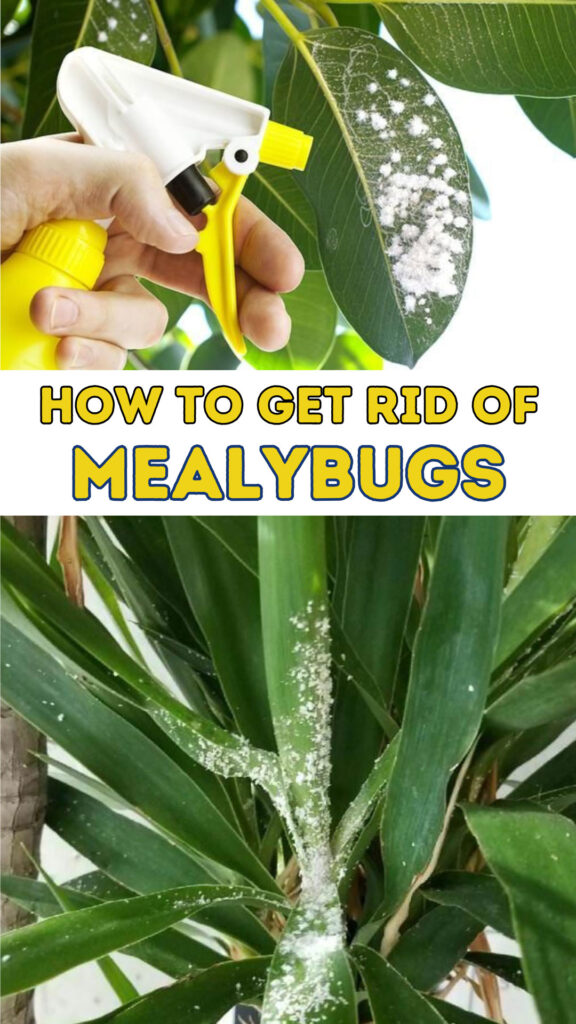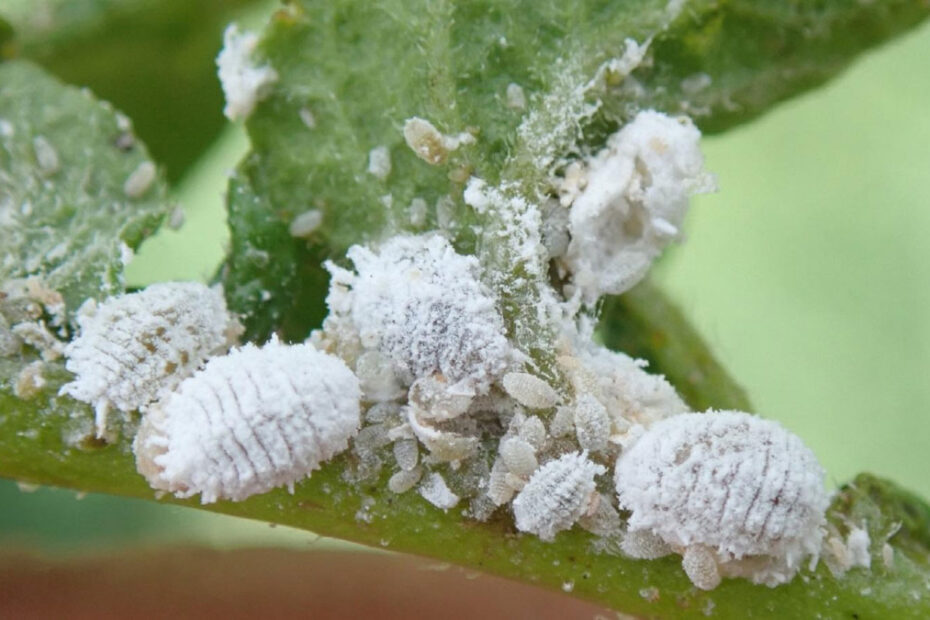Mealybugs can be a gardener’s nightmare, silently wreaking havoc on your beloved plants. These tiny, cotton-like pests suck the life out of your greenery, leaving behind a sticky residue and stunted growth. If you’ve noticed your plants looking a little worse for wear, it’s time to take action.
Getting rid of mealybugs doesn’t have to be a challenging job. With a few simple steps and the right techniques, you can reclaim your garden and ensure your plants thrive. In this guide, you’ll discover effective methods to identify, treat, and prevent mealybug infestations, helping you maintain a healthy and vibrant garden.
Key Takeaways
- Mealybugs are tiny, sap-sucking insects that cause significant damage to plants by extracting sap and leaving sticky honeydew that promotes mold growth.
- Early identification is crucial for effective management; look for white, cotton-like masses, sticky residues, sooty mold, yellowing leaves, and stunted growth.
- Natural remedies, such as introducing beneficial insects (ladybugs, lacewings, parasitic wasps) and using homemade sprays (soap and water, neem oil, garlic and pepper spray), are effective and eco-friendly methods to control mealybugs.
- Chemical solutions like insecticidal soaps and systemic insecticides provide targeted action for severe infestations but should be used according to label instructions to avoid harm.
- Implementing consistent prevention and maintenance practices, including regular plant inspection, proper watering, balanced fertilization, pruning, and humidity control, helps to keep mealybug infestations at bay and maintain a healthy garden.

Understanding Mealybugs
Understanding mealybugs is essential for effective eradication. These tiny, unassuming pests cause significant damage to plants.
Definition List of Key Terms
- Mealybugs: Small, sap-sucking insects covered with a white, powdery wax.
- Honeydew: Sticky residue left by mealybugs that can attract mold.
- Nymph: The juvenile stage of mealybugs before reaching maturity.
- Parthenogenesis: A form of asexual reproduction common in mealybugs allowing females to produce offspring without mating.
Appearance and Characteristics
Mealybugs appear as small, white, cotton-like masses on plants. Typical adult sizes range between 1/10 to 1/4 inch. Nymphs are usually smaller and less detectable. Even though their size, mealybugs can easily be spotted due to their unique waxy coating.
Lifecycle
- Eggs: Laid in clusters, typically on the underside of leaves.
- Nymphs: Hatch within a few days, migrating to feeding sites.
- Adults: Reach maturity within a month and continue the reproductive cycle.
Common Habitats
Mealybugs thrive in warm, moist environments. Youâll often find them on houseplants, greenhouse plants, and garden plants. Hotspots include leaf joints, stem bases, and roots.
Impact on Plants
- Sap Extraction: Mealybugs feed by sucking plant sap, leading to weakened plants.
- Honeydew Production: They excrete honeydew, fostering mold growth.
- Growth Deformation: Continuous feeding causes leaf yellowing, curling, and stunted growth.
Symptoms of Infestation
To identify infestations, look for the following:
- White, cotton-like wax on plants.
- Sticky surfaces indicating honeydew.
- Mold growth on leaves.
- Discolored or stunted plant parts.
Understanding these aspects aids early detection and management, facilitating healthier plants in your garden or home.
Including concise details and relevant information on mealybugs helps effectively address and mitigate infestations.
Identifying Mealybug Infestations
Recognizing a mealybug infestation in its early stages can prevent severe damage to your plants. Mealybugs tend to hide in crevices, making them hard to spot at first. Quickly identifying these pests is crucial for maintaining healthy plants.
Signs And Symptoms
Mealybugs leave distinct signs on affected plants that you can spot with careful observation.
- Cotton-like Masses: Look for white, cotton-like clusters on leaves, stems, and roots. These clusters are often eggs or the waxy secretion of adult mealybugs.
- Sticky Surfaces: Watch for a sticky residue, known as honeydew, which mealybugs excrete. Honeydew can lead to mold growth.
- Sooty Mold: If you notice black, sooty mold on your plants, it often indicates a mealybug infestation, as the mold grows on the honeydew.
- Yellowing Leaves: Check for leaves that are yellowing or wilting without an apparent reason, indicating nutrient loss due to mealybug feeding.
- Stunted Growth: Observe any unusual stunted growth in new shoots, a common symptom of mealybug damage.
Common Host Plants
Mealybugs have a preference for particular plants but can infest a variety of species.
- Houseplants: Common indoor plants like African violets, ferns, and orchids often host mealybugs.
- Tropical Plants: Species such as palms, hibiscus, and begonias are attractive to mealybugs due to their climate preferences.
- Fruits: Plants bearing fruits like citrus, grapes, and apples are common targets.
- Vegetables: Crops including tomatoes, potatoes, and sweet potatoes can suffer from infestations.
- Ornamentals: Garden favorites such as roses, chrysanthemums, and cacti are frequently affected.
Identifying the critical signs and knowing common host plants will help you detect mealybugs early and take appropriate action to safeguard your garden.
Natural Remedies To Get Rid Of Mealybugs
Addressing mealybug infestations using natural remedies is effective and environmentally friendly. These methods ensure that your plants remain safe and healthy without the use of harsh chemicals.
Beneficial Insects
Incorporating beneficial insects in your garden can help control mealybug populations naturally. These insects prey on mealybugs, reducing their numbers efficiently.
Key Beneficial Insects:
- Ladybugs: Effective predators of mealybugs, especially their larvae.
- Lacewings: Known for their larvae, which consume large quantities of mealybugs.
- Parasitic Wasps: Target mealybug eggs and larvae, interrupting their life cycle.
Introducing these beneficial insects can create a balanced ecosystem in your garden, where natural predators keep pest populations in check.
Homemade Sprays
Using homemade sprays is another natural way to combat mealybugs. These sprays can be made from common household ingredients and are safe for plants and the environment.
- Soap and Water Solution:
- Mix 2 tablespoons of mild liquid soap with 1 quart of water.
- Spray the affected plants, focusing on areas with visible mealybugs.
- Repeat every few days until the infestation is under control.
- Neem Oil Spray:
- Combine 1 teaspoon of neem oil with 1 quart of water.
- Add a few drops of mild liquid soap to help the mixture adhere to the plants.
- Apply the spray weekly, as neem oil disrupts the life cycle of mealybugs and other pests.
- Garlic and Pepper Spray:
- Blend 2 garlic cloves and 1 teaspoon of cayenne pepper with 1 quart of water.
- Strain the mixture and add a few drops of liquid soap.
- Spray the affected plants, ensuring coverage of all the infested areas.
Homemade sprays are cost-effective solutions for managing mealybugs without harming your plants or the environment.
Implementing these natural remedies can help you effectively control mealybug infestations while maintaining a healthy and thriving garden.
Chemical Solutions For Mealybugs
Chemical options can be effective for controlling mealybug infestations, especially in severe cases where natural remedies may not suffice. These solutions offer targeted action, reducing pest populations quickly and efficiently.
Insecticidal Soaps
Insecticidal soaps are a popular choice for combating mealybugs, particularly in the early stages of infestation. They work by disrupting the cell membranes of mealybugs, eventually leading to their dehydration and death.
Key Features:
- Non-Toxic: Safe for use on most plants and around pets when applied as directed.
- Contact Kill: Requires thorough application, ensuring all mealybugs are covered.
- Residue-Free: Leaves no harmful residue, making it ideal for use in edible gardens.
Application Tips:
- Mix According to Instructions: Follow the manufacturer’s directions for dilution.
- Thorough Coverage: Spray all plant surfaces, including undersides of leaves and stems.
- Repeat Treatments: Apply every 7-10 days until the infestation is under control.
Systemic Insecticides
Systemic insecticides offer a more potent and long-lasting solution for mealybug control. These chemicals are absorbed by the plant and distributed through its tissues, targeting pests that feed on the plant sap.
Key Features:
- Broad Spectrum: Effective against various sap-sucking insects, not just mealybugs.
- Long-Lasting: Provides ongoing protection for weeks or even months.
- Internal Action: Targets pests hidden in crevices or hard-to-reach areas.
- Follow Dosage Instructions: Use the recommended amount to avoid plant damage.
- Apply to Soil: For systemic granules or liquid drenches, apply to the soil around the plant base.
- Monitor Effects: Check plants regularly for signs of new infestations and reapply if necessary.
Utilizing chemical solutions like insecticidal soaps and systemic insecticides gives gardeners powerful tools to manage severe mealybug problems. Always read and follow label instructions carefully to ensure effective and safe usage.
Prevention And Maintenance
To keep mealybugs at bay, you need consistent prevention and maintenance practices. By regularly inspecting your plants and ensuring proper care, you can minimize the risk of infestations and maintain a healthy garden.
Regular Inspection
Frequent checks can help you catch small problems before they get out of hand:
- Weekly Checks: Examine your plants at least once a week. Look under leaves, around stems, and in crevices. Mealybugs often hide in these spots.
- Use Magnification: Employ a magnifying glass to spot tiny mealybugs and their eggs.
- Look for Signs: Identify early indicators like white, cotton-like masses, sticky honeydew residue, or black sooty mold.
- Isolation of New Plants: Quarantine new plants for a few weeks to ensure they’re pest-free before introducing them to your garden.
Proper Plant Care
Healthy plants are less susceptible to infestations. Ensure your plants thrive with these care tips:
- Watering Practices: Avoid overwatering, which creates a moist environment ideal for mealybugs. Water plants according to their specific needs.
- Fertilization: Use balanced fertilizers to provide essential nutrients without promoting excessive, weak growth. Over-fertilized plants can attract pests.
- Pruning: Regularly trim dead or infected plant parts. This promotes healthy growth and removes potential hiding spots for mealybugs.
- Healthy Soil: Use well-draining soil to prevent moisture buildup and improve plant resilience.
- Humidity Control: Monitor and regulate humidity levels, especially for indoor plants. Too much humidity can attract mealybugs.
By implementing these maintenance practices, you’ll create an environment that’s less hospitable to mealybugs, ensuring healthier plants.
Conclusion
Tackling mealybug infestations requires a mix of vigilance and proactive measures. By understanding their lifecycle and identifying early signs, you can address issues before they escalate. Natural remedies and beneficial insects offer eco-friendly solutions, while chemical treatments provide a robust response for severe cases.
Regular plant inspections and proper care practices are essential in preventing future infestations. By maintaining a healthy garden environment, you’ll ensure your plants thrive and remain mealybug-free. Stay diligent and informed, and your green space will flourish.
Frequently Asked Questions
What are mealybugs?
Mealybugs are small, sap-sucking insects covered in a white, powdery wax. They thrive in warm, moist environments and can significantly damage plants by draining their sap.
How can I identify a mealybug infestation?
Look for white, cotton-like masses on leaves and stems, sticky honeydew residue, black sooty mold, yellowing leaves, and stunted plant growth.
What types of plants are most affected by mealybugs?
Mealybugs commonly infest houseplants (like African violets & orchids), tropical plants (like hibiscus), fruit-bearing plants (like citrus & grapes), vegetables (like tomatoes), and ornamentals (like roses & cacti).
How can I treat mealybug infestations naturally?
You can use beneficial insects such as ladybugs and lacewings, or homemade sprays like soap and water solutions, neem oil sprays, and garlic and pepper sprays.
When should I consider chemical treatments for mealybug control?
Chemical treatments are recommended for severe infestations where natural remedies aren’t effective. Options include insecticidal soaps and systemic insecticides, following dosage instructions carefully.
What are some effective prevention tips for mealybug infestations?
Regularly inspect plants, isolate new plants, ensure proper watering, balanced fertilization, regular pruning, and control humidity levels to create a less hospitable environment for mealybugs.
